Global Journal of Ecology
Comparison between different parameters for anaerobic digestion technologies
Rabaa K AL-Farajat and Mohamed R Gomaa*
Cite this as
AL-Farajat RK, Gomaa MR (2022) Comparison between different parameters for anaerobic digestion technologies. Glob J Ecol 7(2): 090-095. DOI: 10.17352/gje.000067Copyright
© 2022 AL-Farajat RK, et al. This is an open-access article distributed under the terms of the Creative Commons Attribution License, which permits unrestricted use, distribution, and reproduction in any medium, provided the original author and source are credited.Due to the increased demand for energy and the near depletion of fossil fuel sources, in addition to the problems of global warming, the world has turned to renewable energy sources as an alternative solution. One energy source is the anaerobic digestion of organic matter, such as animal or food waste. Biogas is produced from this process, used to generate electricity and heat, or processed for use as a transportation fuel and compost production for agriculture. This process is affected by many factors like the potential of hydrogen (PH), temperature, carbon/nitrogen ratio (C/N), and other factors. Dry anaerobic digestion has higher total solid content (TS) than wet anaerobic digestion. On the other hand, it has lower maintenance and construction costs compared with wet anaerobic digestion. In this research, we will highlight the operational conditions of the process in addition to its different types. It also contains an overview of this system, its working principle, its advantages, and the system component and show the best ways to improve its efficiency.
Introduction
The industrial revolution and the massive increase in population have increased the amount of solid waste around the world. And due to the great demand for energy, attention has been paid to making use of these wastes, extracting the available organic matter, and converting it into biogas through the anaerobic digestion process [1-4]. Energy extracted from this source is one of the most widely used renewable energy sources due to its continuous availability compared to wind and solar energy. This type of power has three objectives: providing large amounts of clean energy, improving waste management systems, and improving agricultural systems by providing fertilizers resulting from waste treatment [5]. One of the attractive factors for the process is the availability of the feedstock material for free or pay to the energy facility instead of taking it due to the high fees for landfilling waste in some countries [6-9]. Anaerobic digestion plants have spread worldwide, with an estimated production of 87 TWh of electricity [10]. Agricultural waste, food waste, and sewage sludge are the most important sources of biodegradable waste and, thus, biogas production [11].
Working principle of Anaerobic digestion technology
Anaerobic digestion: It is a natural process in which bacteria convert organic matter (potential energy) into biogas, and it occurs in the absence of oxygen through the activities of microorganisms by breaking down organic matter and producing biogas consisting of methane (CH4) and carbon dioxide (CO2) and some parts of other gases such as hydrogen sulfide (H2S) and nitrogen (N2), organisms use only a tiny amount of the energy during decomposition (digestion), and the rest of the decomposition energy is stored in the produced gas. Figure 1 describes an overview of AD and the potential usage of the final products.
Anaerobic digestion consists of 4 stages, and each stage has a group of microorganisms. They are called primary fermentation bacteria and secondary fermentation bacteria. The other two groups are called (Al-Mutaqa), a complex process that depends on the microbial situation and internal operating conditions.
First Stage: Primary fermenting bacteria break down the complex substrate into smaller pieces [12]. The second stage: causes acidification and the formation of volatile fatty acids, ketones, and alcohols. The third stage: the construction of acetate, occurs through the fermentation of primary bacteria and secondary fermentation bacteria, which convert solutes and mono-soluble substances into acetic acid, hydrogen, and carbon dioxide, which begin to convert fatty acids into acetic acid, carbon dioxide and molecules of hydrogen. Fourth stage: methane (CH4) is formed, and acetic acid, hydrogen, and carbon dioxide are converted into biogas [13].
The whole process can be summarized with this chemical equation (1) [12]:
C6H12O6 → 3CO2+3CH4
Advantages of anaerobic digestion technology
- Anaerobic digestion has many advantages, including [14This process helps dispose of waste and utilize the methane gas stored in it by treating it in specific ways.
- This process reduces the percentage of greenhouse gases in the atmosphere and unwanted odors.
- Reducing the pollution of water sources by treating organic fertilizers and wastewater before using them in agricultural activities.
- Converting nutrients found in organic waste, such as phosphorous and nitrogen, into more biologically active and soluble forms helps plants to absorb them easily.
- It is an inexpensive process.
Influences factors in a process
This process is affected by several factors that affect its productivity; it is also can be summarized as follows:
- PH and acidity: the AD process is sensitive to pH, and its best performance values are between (PH 5-6) [15].Temperature: generally, the higher the temperature, the faster the process. This process can be classified according to temperature into three categories; psychrophilic (below 20 °C), mesophilic (20°C - 45 °C), and thermophilic (55 °C - 70 °C) [15].
- Substrate properties: the material used in the digestion process, whether it is food waste, agricultural waste, or sewage water, has a significant impact on the outcomes [15].
- C / N ratio: carbon to nitrogen ratio must be adjusted to improve this process, and the ideal ratio ranges are between 20 and 35 [15]. Hydraulic retention time: The average time spent by the substrates inside the reactor varies according to the type of waste and the digester [16].
- Organic loading rate: the number of materials fed to the digester, and biogas production increases with an increase [16].
System components
The anaerobic digestion system consists of the preparation tank, silo, biodigester, digestate storage tank, gasholder, and combined heat and power system. Figure 2 describes Agricultural biogas plants which use agricultural waste as feedstock, which have 12 main parts, arranged according to the sequence of events, starting from No. 1 cattle stables up to No. 12, which is heat utilization [17].
Types of anaerobic digestion systems
Anaerobic digestion is divided into different categories according to its total solids content: Wet (0.5% ~ 8% TS) and AD Dry (> 15% TS) [18]. Or according to the digestor stage; either single stage or co-digestion [19]. Or according to feeding systems, batch or continuous systems [20].
Dry anaerobic digestion
It is the fermentation process of waste with a large proportion of solids and is characterized by the high productivity of biogas. Figure 3 shows the parameters that affect dry anaerobic digestion [21]; this type is of limited use worldwide as it is used in municipal solid waste and agricultural waste. And it has several drawbacks. Its high solids content reduces its stability, high start-up period, high inhibition effect, and poor operational strategies. Despite that, this process is more economical because its need for water is less than other types, as many countries of the world suffer from a shortage of water sources [22]. Also, with an increase in TS content, the Digestor volume and capital cost will decrease, so it’s affected by a number of factors such as TS content, temperature, pH (C/N ratio), and mixing (Figure 2) [23]. These processes can produce methane gas at a rate of 0.2 and 0.6 m3/kg of volatile solids (VS) according to raw materials, optimal C: N ratios of 20 to 30, and the temperature values range between (35 °C – 57 °C) depending on the mesophilic digestion or thermophilicity, and the ideal PH values range between (6.8 and 7.2) [24].
Wet anaerobic digestion
Wet waste can be extracted from food residues, animal waste, fats, oils, and sewage sludge[24]. Here the input material shows liquid properties and must be constantly stirred [25]. The maintenance and construction cost of wet digestion plants is high due to the need for pipes and pumps. Figure 4 represents an Illustration of a sewage treatment plant [26]. But the main advantages are the high yield of methane that can be produced from the unit substrate, easy operation, generation, and maintenance, and low sludge productivity [27]. These processes can produce methane gas at a rate of 0.28 L/g [28]. C: N ratios (24.6 ± 0.2). PH value about (7.62 ± 0.10) [29].
Anaerobic co-digestion
The co-digestion of waste involves the use of two different substrates at the same time, such as food residues and sludge, which in turn leads to stability and improvement of the efficiency of the process due to its ability to reduce the organic load. Studies have shown its ability to increase biogas production by 26% of the traditional system, Figure 5 shows the path of the process and the two reactors in which this process takes place. In the first reactor, each hydrolysis, acidogenesis, and acetogenesis occur. But on the second reactor, methanogens arise [30]. This process can also reduce both emissions to the environment and the cost of the process. Still, on the other hand, this process has some negatives, such as the high cost of the initial establishment and that it is a complex process [31]. In addition to the factors affecting anaerobic digestion, consideration should be given here, such as the choice of materials to be mixed and the mixing ratio, such as combining the first substrate with a low C/N ratio with another substrate with a high C / N ratio, to reach the ideal ratio also the PH in the first stage is between 5 and 6. Figure 6 shows that more than one feedstock can be used in a co-digestion system [32]. The methane production here is higher due to the hydrolysis and the improved fermentation of the substrates, where some studies indicated its ability to produce 380 NL CH4/kg. This system consists of two separate reactors. In the first reactor, bio-hydrogen can be produced by the need for dark fermentation and some special operating conditions [19].
Single-stage anaerobic digestion
Ninety percent of European anaerobic digestion plants are in a single-stage system with lower operating and installation costs and less complex than a combined digestion system [20]. The process takes place in a single reactor and is influenced by several factors, such as organic loading rate, flow rate and time, and hydraulic retention time. To produce the most significant amount of methane, the hydraulic Retention time is preferable to be large and the organic loading rate low [33]. The pH here is (7 to 8), and this ratio is not suitable for the growth of bacteria that carry out the process of hydrolysis or fermentation. This is one of the reasons why a large amount of methane is not produced in this process. One study indicated its ability to produce 330 NL CH4/kg [19]. Figure 7 shows single-stage digestion in which the whole anaerobic digestion stages can occur [30].
Continuous feeding system
One of the most important steps in establishing a digestion station is determining the feeding strategy, which impacts the whole process. In continuous feeding, the loads are regular [20]. Substrates are added continuously, and the same amount of material produced from the digester is removed. One of the studies indicated its ability to produce methane in an amount of 2.78 L CH/L/d [33]. The process parameters, methane production, and daily feed to the reactors must be monitored periodically, as well as the amount of fermentation in the digester that must be removed [34].
Batch feeding system
The reactor is fed to the substrate once and then shut down to start the process. Construction and maintenance costs are low, and energy losses are low. One study indicated its ability to produce methane by 1.51 L CH /L/d [35]. Suddenly increasing the ratio of substrates on the reactor affects the system, either negatively or positively, but this process takes a long time, which helps in increasing the ability of bacteria to break down complex compounds [36].
Comparative between different parameters for anaerobic digestion technology
The presented work summarizes the main difference between those parameters in the following tables. These tables and charts indicate that the system will operate more efficiently, and the methane output will increase during wet, co-digestion, and Continuous feeding conditions. Although the methane yield is higher in wet anaerobic systems, the maintenance and construction cost are higher than in dry anaerobic systems, and the total solid content is higher in the dry method. Methane yield and stability in anaerobic co-digestion are higher than in single-stage anaerobic digestion. However, 90% of AD plants in Europe operate at this range because of the complexity and high cost of the initial establishment of co-digestion. According to the feeding system, the continuous feeding system produces more methane than the batch feeding system, but the cost of construction, maintenance, and process time in the constant feeding system is more than in the Batch feeding system Tables 1-3, Figures 8-10.
Conclusion
Anaerobic digestion has a significant role in reducing waste and environmental pollution and using it as a renewable energy source. This process has different operating conditions; in addition, the amount of energy generated varies according to the type of waste. The yield can be improved by adjusting the temperature, and pH and regulating the organic loading rate. Anaerobic co-digestion has more stability than single-stage anaerobic digestion and can produce 380 NL CH4/kg, but single-stage can produce 330 NL CH4/kg. On the other hand, co-digestion Requires higher installation costs, but 90% of European anaerobic digestion plants are in a single-stage system. In a continuous feeding system, the cost of construction and maintenance is lower than in the Batch feeding system, but it takes a higher process time than the Batch feeding system. Wet, Continuous, and co-digestion are preferred to improve yield.
- Srivastava SK. Advancement in biogas production from the solid waste by optimizing the anaerobic digestion. Waste Disposal & Sustainable Energy , 2020. https://doi.org/10.1007/s42768-020-00036-x.
- Shalby M, Abuseif A, Gomaa MR, Salah A, Marashli A, Al-Rawashdeh H. Assessment of Dust Properties in Ma'an Wind Farms in Southern Jordan. Jordan Journal of Mechanical and Industrial Engineering 16 (4): 2022.
- Gomaa MR, Murtadha TK, Abu-jrai A, Rezk H, Altarawneh MA, Marashli A. Experimental Investigation on Waste Heat Recovery from a Cement Factory to Enhance Thermoelectric Generation. Sustainability 2022; 14: 10146. https://doi.org/10.3390/su141610146.
- Alahmer A, Rezk H, Aladayleh W, Mostafa AO, Abu-Zaid M, Alahmer M, Gomaa MR, Alhussan AA, Ghoniem RM. Modeling and Optimization of a Compression Ignition Engine Fueled with Biodiesel Blends for Performance Improvement. Mathematics 2022;10: 420. https://doi.org/10.3390/math10030420.
- Lisowyj M, Wright MM . A review of biogas and an assessment of its economic impact and future role as a renewable energy source .DE GRUYTER, 2018. https://doi.org/10.1515/revce-2017-0103 .
- Badgett A, Newes E, Milbrandt A, Economic Analysis of Wet Waste-to-Energy Resources in the United States, Energy 2019. https://doi.org/10.1016/j.energy.2019.03.188.
- Gomaa MR, Matarneh GA, Shalby M, AL-Rawashdeh HA. A State-¬of-¬the-¬art Review on a Thermochemical Conversion of Carbonaceous Materials: Production of Synthesis Gas by Co-gasification Process- Part I. Current Alternative Energy 2020; 4:1. https://doi.org/10.2174/2405463104999200904115100.
- Gomaa MR, Al-Dmour N, AL-Rawashdeh HA, Shalby M. Theoretical model of a fluidized bed solar reactor design with the aid of MCRT method and synthesis gas production. Renewable Energy 148: 2020; 91-102. https://doi.org/10.1016/j.renene.2019.12.010.
- Gomaa MR, Mustafa RJ, Al-Dmour N. Solar Thermochemical Conversion of Carbonaceous Materials into Syngas by Co-Gasification. Journal of Cleaner Production 2020; 248: 119185. https://doi.org/10.1016/j.jclepro.2019.119185.
- Karki R, Chuenchart W, Surendra KC, Shrestha S, Raskin L, Sung S, Hashimoto A, Kumar Khanal S. Anaerobic co-digestion: Current status and perspectives. Bioresour Technol. 2021 Jun;330:125001. doi: 10.1016/j.biortech.2021.125001. Epub 2021 Mar 17. PMID: 33773269.
- Van DP, Fujiwara T, Tho BL, Toan PPS, Minh GH, A review of anaerobic digestion systems for biodegradable waste: Configurations, operating parameters, and current trends, Environ. Eng. Res. 2020; 25(1): 1-17 https://doi.org/10.4491/eer.2018.334.
- Gunesa B, Stokesb J, Davisc P, Connollyd C, Lawlera J. Pre-treatments to enhance biogas yield and quality from anaerobic digestion of whiskey distillery and brewery wastes: A review. Renewable & Sustainable Energy Reviews, 2019. https://doi.org/10.1016/j.rser.2019.109281 .
- Meegoda JN, Li B, Patel K, Wang LB. A Review of the Processes, Parameters, and Optimization of Anaerobic Digestion. Int J Environ Res Public Health. 2018 Oct 11;15(10):2224. doi: 10.3390/ijerph15102224. PMID: 30314318; PMCID: PMC6210450.
- Manyi‑Loh CE, Mamphweli SN, Meyer EL, Okoh AI. Microbial anaerobic digestion: process dynamics and implications from the renewable energy, environmental and agronomy perspectives. International Journal of Environmental Science and Technology. 2019. https://doi.org/10.1007/s13762-019-02380-w .
- Cremonez PA, Teleken JG, Weiser Meier TR, Alves HJ. Two-Stage anaerobic digestion in agroindustrial waste treatment: A review. J Environ Manage. 2021 Mar 1;281:111854. doi: 10.1016/j.jenvman.2020.111854. Epub 2020 Dec 25. PMID: 33360925.
- Bhatt AH, Tao L. Economic Perspectives of Biogas Production via Anaerobic Digestion. Bioengineering. 2020; 7:74. https://doi.org/10.3390/bioengineering7030074.
- Velásquez Piñas JA, OsvaldoJosé V, Lora EES, Roalcaba ODC, Technical assessment of mono-digestion and co-digestion systems for the production of biogas from anaerobic digestion in Brazil. Renewable Energy. 2017. doi: https://doi.org/10.1016/j.renene.2017.10.085
- Gonga H, Liua M, Lia K, Lic C, Xua G, Wanga K. Optimizing dry anaerobic digestion at pilot scale for start-up strategy and long-term operation: organic loading rate, temperature and co-digestion. Journal Pre-proofs. https://doi.org/10.1016/j.biortech.2020.123828.
- Zhang E, Li J, Zhang K, Wang F, Yang H, Zhi S, Liu G. Anaerobic digestion performance of sweet potato vine and animal manure under wet, semi-dry, and dry conditions. AMB Express. 2018. https://doi.org/10.1186/s13568-018-0572-9
- Bi S, Westerholm M, Qiao W, Xiong L, Mahdy A, Yin D, Song Y, Dong R. Metabolic performance of anaerobic digestion of chicken manure under wet, high solid, and dry conditions. Bioresource Technology. 2019. doi: https://doi.org/10.1016/j.biortech.2019.122342
- Momayeza F, Karimia K, Taherzadeh MJ. Energy recovery from industrial crop wastes by dry anaerobic digestion: Areview.Elsevier.2019. https://doi.org/10.1016/j.indcrop.2018.12.051
- Jansson AT, Patinvoh RJ, Sárvári Horvath I, Taherzadeh MJ. Dry Anaerobic Digestion of Food and Paper Industry Wastes at Different Solid Contents fermentation. 2019. https://doi.org/10.3390/fermentation5020040
- Rocamora I, Wagland ST, Villa R, Simpson EW, Fernández O, Bajón-Fernández Y. Dry anaerobic digestion of organic waste: A review of operational parameters and their impact on process performance. Bioresour Technol. 2020 Mar;299:122681. doi: 10.1016/j.biortech.2019.122681. Epub 2019 Dec 24. PMID: 31902638.
- Bhatt AH, Ren ZJ, Tao L. Value Proposition of Untapped Wet Wastes: Carboxylic Acid Production through Anaerobic Digestion. iScience. 2020 Jun 26;23(6):101221. doi: 10.1016/j.isci.2020.101221. Epub 2020 Jun 1. PMID: 32563151; PMCID: PMC7305404.
- Zhou M, Yang H, Zheng D, Pua X, Liua Y, Wang L, Zhang Y, Deng L. Methanogenic activity and microbial communities characteristics in dry and wet anaerobic digestion sludges from swine manure. Biochemical Engineering Journal. 2019. https://doi.org/10.1016/j.bej.2019.107390
- Sevillano CA, Pesantes AA, Peña Carpio E, Martínez EJ, Gómez X. Anaerobic Digestion for Producing Renewable Energy-The Evolution of This Technology in a New Uncertain Scenario. Entropy (Basel). 2021 Jan 25;23(2):145. doi: 10.3390/e23020145. PMID: 33503933; PMCID: PMC7912667.
- Wang J, Hao X, Liu Z, Guo Z, Zhu L, Xiong B, Jiang D, Shen L, Li M, Kang B, Tang G, Bai L. Biochar improves heavy metal passivation during wet anaerobic digestion of pig manure. Environ Sci Pollut Res Int. 2021 Jan;28(1):635-644. doi: 10.1007/s11356-020-10474-z. Epub 2020 Aug 20. PMID: 32816179.
- Baldi F, Pecorini I, Iannelli R. Comparison of single-stage and two-stage anaerobic Co-Digestion of food waste and activated sludge for hydrogen and methane production. Renewable Energy. 2019. doi: https://doi.org/10.1016/j.renene.2019.05.122.
- Md. Siddique NS, Ab Wahid Z. Achievements and perspectives of anaerobic co-digestion: a review. Journal of Cleaner Production. 2018. https://doi.org/10.1016/j.jclepro.2018.05.155
- Rabii A, Aldin S, Dahman Y, Elbeshbishy E. A Review on Anaerobic Co-Digestion with a Focus on the Microbial Populations and the Effect of Multi-Stage Digester Configuration. Energies. 2019. https://doi.org/10.3390/pr7090600
- De Gioannis G, Muntoni A, Polettini A, Pomi R, Spiga D. Energy recovery from one- and two-stage anaerobic digestion of food waste. Waste Manag. 2017 Oct;68:595-602. doi: 10.1016/j.wasman.2017.06.013. Epub 2017 Jun 16. PMID: 28629709.
- Shamurada B, Sallisa P, Petropoulosa E, Tabraiza S, Ospinaa C, Learya P, Dolfinga J, Grayb N. Stable biogas production from single-stage anaerobic digestion of food waste. Applied Energy. 2020. https://doi.org/10.1016/j.apenergy.2020.114609
- Pramanik SK, Suja FB, Porhemmat M, Pramanik BK. Performance and Kinetic Model of a Single-Stage Anaerobic Digestion System Operated at Different Successive Operating Stages for the Treatment of Food Waste,Processes. 2019. https://doi.org/10.3390/pr7090600.
- Szilágyi Á, Bodor A, Tolvai N, Kovács KL, Bodai L, Wirth R, Bagi Z, Szepesi Á, Markó V, Kakuk B, Bounedjoum N, Rákhely G. A comparative analysis of biogas production from tomato bio-waste in mesophilic batch and continuous anaerobic digestion systems. PLoS One. 2021 Mar 17;16(3):e0248654. doi: 10.1371/journal.pone.0248654. PMID: 33730081; PMCID: PMC7968646.
- Pramanik SK, Suja FB, Zain SM. The anaerobic digestion process of biogas production from food waste: Prospects and constraints, Bioresource Technology Reports (2019), https://doi.org/10.1016/j.biteb.2019.100310
- Tan LC, Peschard R, Deng Z, Morgado Ferreira AL, Lens PNL, Pacheco-Ruiz S. Anaerobic digestion of dairy wastewater by side-stream membrane reactors: Comparison of feeding regime and its impact on sludge filterability, Environmental Technology & Innovation. 2021. https://doi.org/10.1016/j.eti.2021.101482
Article Alerts
Subscribe to our articles alerts and stay tuned.
 This work is licensed under a Creative Commons Attribution 4.0 International License.
This work is licensed under a Creative Commons Attribution 4.0 International License.
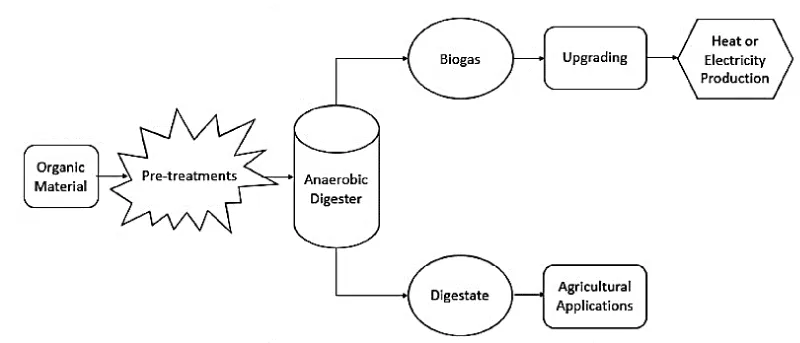
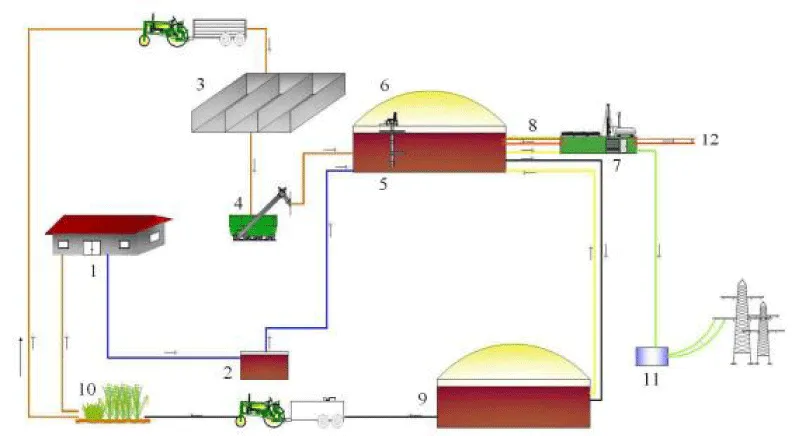
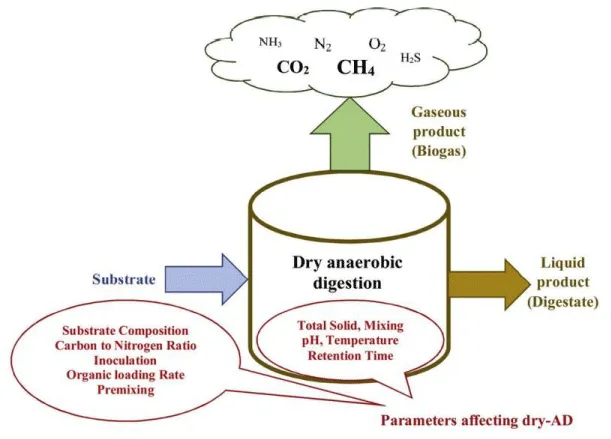
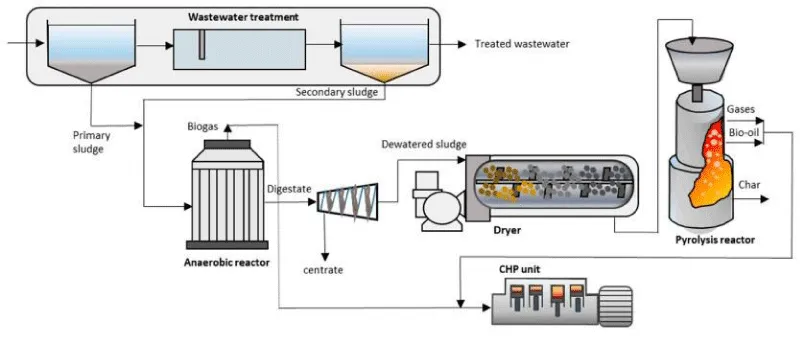
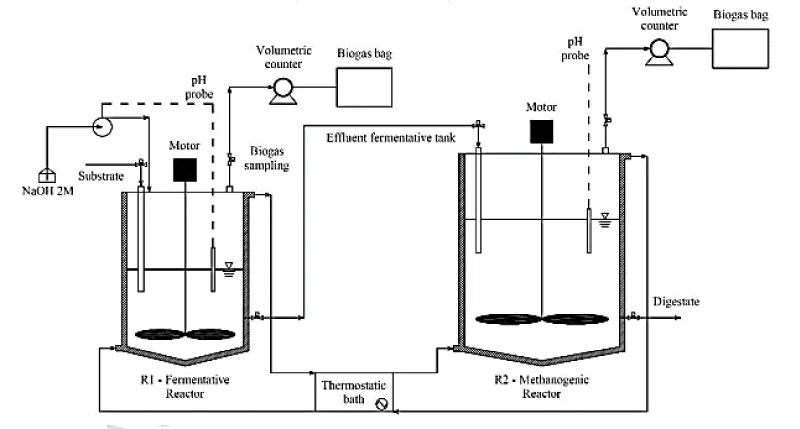
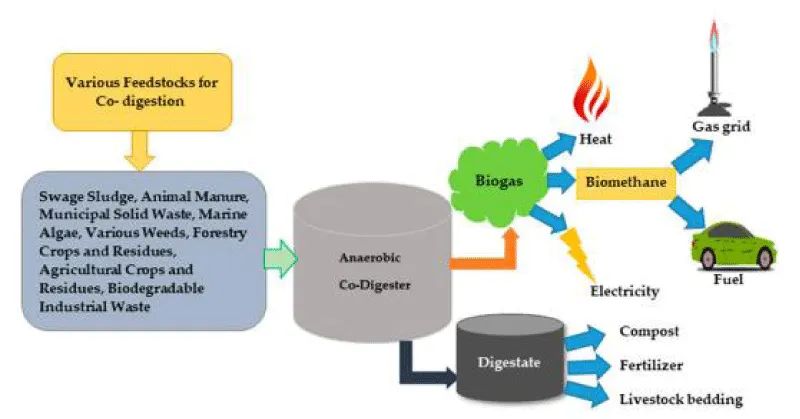
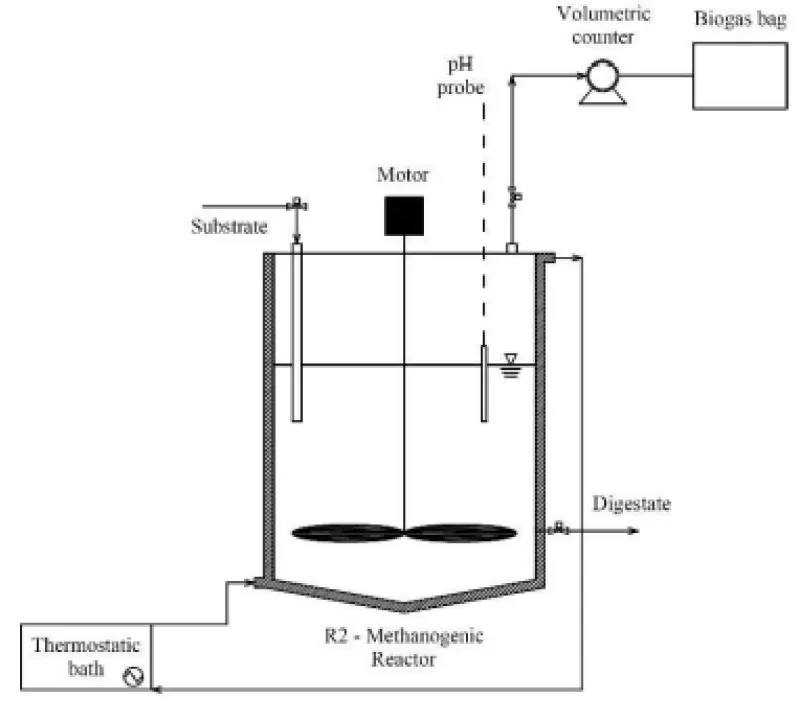
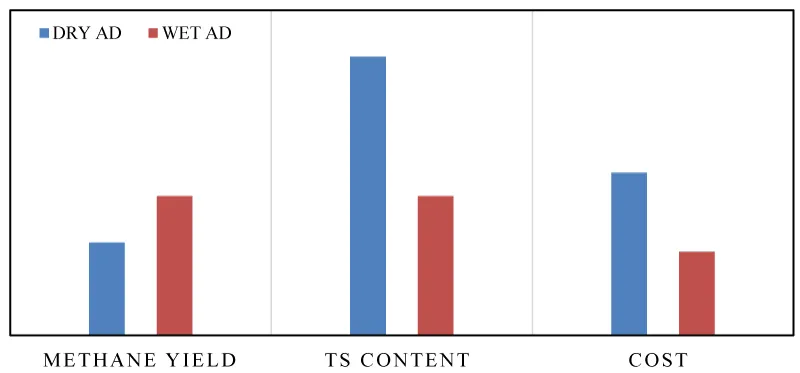
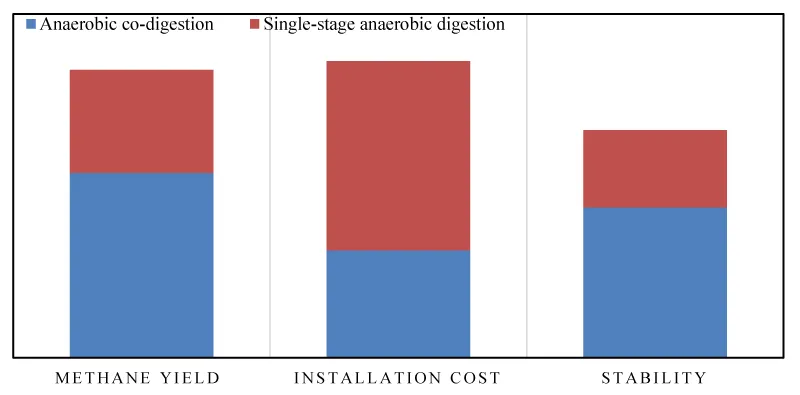
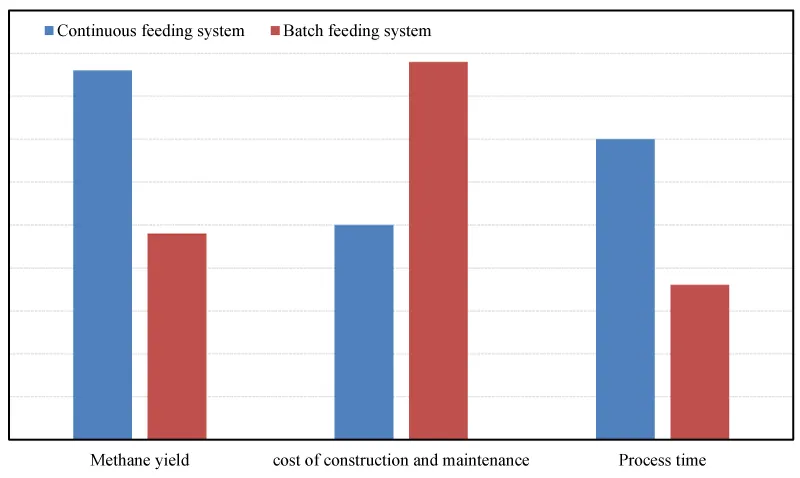


 Save to Mendeley
Save to Mendeley
